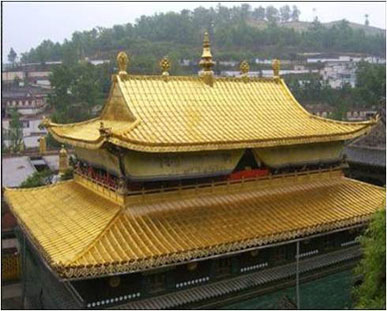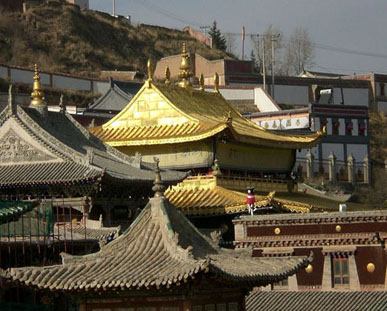Multiple eave roof
|
The Grand Golden Tiled Hall was built in the last years of Ming Dynasty. It is said that the hall was funded by Shenzhong and other four tribes near the Ta’er Temple, with the great pagoda (Dharmacakra Tower) as its center. In the 47th year under the reign of Emperor Kangxi in Qing Dynasty (1708), the 18th abbot of Ta’er Temple raised 1,300 taels of silver and 12,000 gold from the prince and governor of Qinghai, and expanded the hall into a building with multiple eave roof covered with gold-plating tiles. In the 5th year under the reign of Emperor Qianlong (1740), the governor of Tibet re-plated tiles and installed precious vases on the roof with 27,000 taels of silver. In the 11th year under the reign of Emperor Qianlong in Qing Dynasty (1746), funded by the prince of Qinghai and his wife, the overhanging eaves of the Grand Golden Tiled Hall were built. In the hall stands the silver Great Pagoda which is 11m in height. In front of the pagoda, golden and silver lamps, ancient vases and other apparatus for worshiping are displayed; the “Kangyur Sutra” written with gold powder is stored behind the pagoda; and the five columbariums of Aga, Sachi, Quexi and other living Buddha in all ages, as well as the statue of Denzin Dhammapala (also known as Tongmo Dharma Protector) proprietary to the Yellow Sect are enshrined beside the pagoda. |
|
 |
 |
